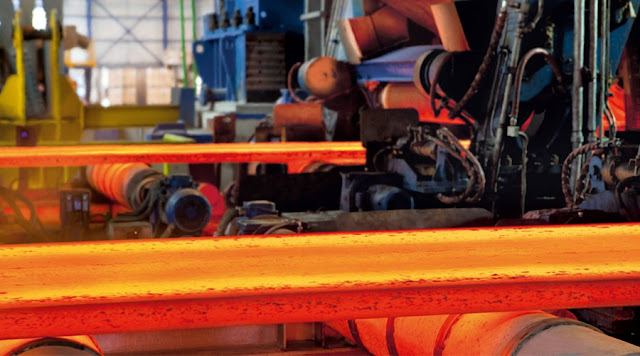What is Continuous Casting Process?
The continuous casting process is a production process in the foundry industry.
Continuous casting
After the molten steel produced by the converter is refined in the refining furnace, the molten steel needs to be cast into billets of different types and specifications.
Pour the high-temperature molten steel into the ingot molds one by one, and pour the high-temperature molten steel continuously into one or several copper molds (molds) with a "live bottom" (ingot head) using forced water cooling,
The molten steel quickly condenses with the "live bottom". After the molten steel solidifies into a shell of a certain thickness, the "live bottom" is pulled out from the lower end of the copper mold.
In this way, the slab that has solidified to a certain thickness will be continuously pulled out from the water-cooled mold and continue to be sprayed and cooled in the secondary cooling zone.
The billet with a liquid core solidifies as it goes until it is completely solidified.
After the billet is completely solidified, use an oxygen cutting machine or a shearing machine to cut the billet into billets of a certain size.
This new process of directly pouring high-temperature molten steel into billets is called continuous casting.
Continuous Casting Process
The continuous casting section is the production process of continuously casting the refined molten steel into billets. The main equipment includes a rotary table, a tundish, a mold, and a tension leveler.
The ladle containing the refined molten steel is transported to the turntable. After the turntable is rotated to the pouring position, the molten steel is poured into the tundish.
The tundish then distributes the molten steel to each mold from the nozzle.
The mold is one of the core equipment of the continuous casting machine, which forms the casting and rapidly solidifies and crystallizes.
The tension leveler and the crystallizing vibration device work together to pull out the castings in the mold, and after cooling and electromagnetic stirring, they are cut into slabs of a certain length.
The automatic control of continuous casting mainly includes control technologies such as the speed control of the continuous casting machine drawing roll, the control of the vibration frequency of the mold, and the fixed-length cutting control.
For other requirements of the continuous casting process regarding the temperature of molten steel, we will continue to popularize it in the future.
If you have any doubts about the above or have any additions, please feel free to give guidance at any time.
If you have any needs for continuous casting machines and steelmaking equipment, you are very welcome to contact us, we will provide you with the most professional and suitable solutions.
E-mail: saleswn@hanrm.com / inquiry66@hanmetallurgy.com ( Daisy Zhai )
Xian Hani Tech Co.,Ltd.



Comments
Post a Comment